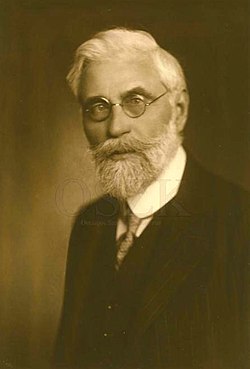INFORMATION
Béla Vikár (Hetes, April 1, 1859 – Dunavecse, September 22, 1945) Hungarian ethnographer, translator, correspondent member of the Hungarian Academy of Sciences. Translator of the Kalevala.
His life and work
He completed his higher education at the Pázmány Péter University in Budapest , majoring in Hungarian language and literature between 1877 and 1884, and wrote the lectures of his teachers (Ágost Greguss, Pál Gyulai). In 1889, for half a year, he traveled to Finland, then part of the Russian Empire, to study the Finnish language and ethnography. He was employed as a shorthand writer in the Parliamentary Office from 1880, where he was employed until his retirement in 1921.
As early as the late 1870s, he wrote the lyrics of folk tales and folk songs in shorthand. At Christmas 1896, he began recording folk songs on a phonograph in a unique way in Europe in Borsod County. Béla Bartók recorded his phonograph recordings.
In 1900 he presented his methods and results at the Ethnographic Congress held at the World’s Fair in Paris. International ethnography has also accounted for it since then. During his collections, he recorded about seven thousand songs. In 1896 he was elected secretary of the Hungarian Ethnographic Society, later he founded the society, the La Fontaine Society, and became its president. In 1911 he was elected a corresponding member of the Hungarian Academy of Sciences. Translated from Finnish, French, German, English, Georgian, Estonian, Norwegian. Its most famous is the Kalevala, translated from the Finnish original. He was a versatile individual, he joined the Esperanto movement in the 1910s, was a board member of the Hungarian National Esperanto Association (1920–1928), and then an honorary member (1928–1945).
His private life
His first wife was Julianna Krekács, who died in 1902. His second wife was Kornélia Bőke (1864–1942) , the daughter of Gyula Bőke, a doctor, and Etelka Freund, with whom she married in Ferencváros, Budapest, on June 9, 1903.
Through his maternal grandfather, Béla Kenessey is a civil engineer, water engineer, ministerial adviser, and a second-degree cousin of a significant figure in the Hungarian water service.
From his literary translations
- He made the first translation of the Kalevala based on the Finnish original (Ferdinand Barna also worked partly on Schiefner’s German translation), which was published by the Academy in 1909 and [8] in 1935 by the La Fontaine Literary Society.
- His significant translational achievement was the translation into Hungarian of the Georgian epic Sota Rustaveli Tariel, The Panther-Leather Knight, which was published in 1917.
- He translated all the tales of La Fontaine published in 1929 by the La Fontaine Literary Society and Dante Publishing.
Journal edits
- Élet (1892–1895)
- Turán (1917–1918)
- Több gyorsírási szaklapot szerkesztett (Fővárosi Gyorsíró, Gyorsírászati Lapok, Budapesti Gyorsíró).



